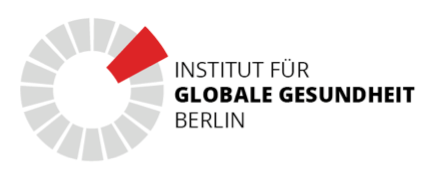An insight into COVID-19 in Sweden
by Olivia Biermann and Birger Forsberg, 21 April 2020
Life in Sweden is not continuing as usual during the COVID-19 pandemic. Sweden’s strategy may be different from other countries, as it aims not only at reducing COVID-19 transmission but also at reaching other important health goals. The strategy combines regulations and advice with a strong emphasis on individuals’ responsibility for action. We provide an insight into the public health measures, the current situation and considerations for the way forward related to COVID-19 in the country. Sweden has 10,2 million inhabitants, 2,3 million of who live in Stockholm region.
Public health measures
Sweden is implementing COVID-19-related interventions with the same aspirations as other countries: reduce transmission and “flatten the curve” (the latter refers to decreasing the speed of transmission in the population). However, discussions in Sweden also focus on other aims, such as giving opportunity for physical activity, maintaining important social functions and meeting children’s needs. The ambition is to find implementation strategies that reduce the transmission of COVID-19 and reach other important health goals.
The strategy of the Public Health Agency of Sweden (Folkhälsomyndigheten) first and foremost intends to protect people older than 70 years and avoid overwhelming the health system. On 1 April, the Agency has published regulations and general advice on everyone’s responsibility to prevent the spread of COVID-19. These are strong recommendations related to hand hygiene, physical distancing, staying home when you are sick and avoiding unnecessary travels. The recommendations also outline what workplaces, public transportation, businesses, sports clubs, associations, as well as prison services and the migration board should do against COVID-19.
In addition to the above, events with more than 50 participants are no longer allowed, neither are visits to elderly care homes. In contrast to other countries, the Public Health Agency recommends keeping kindergartens and schools open for children up to 16 years of age, as school closure is considered an ineffective measure in curbing the spread of COVID-19 and may also heavily affect the available workforce, especially in health, who would have to take care of their children and thus not be able to work.
A study by the organization Public & Science (Vetenskap & Allmänhet) (published on 21 April) confirmed that Swedes have great trust in public services and the government regarding news reporting on COVID-19. When it comes to behaviour change, a survey by the Swedish Civil Contingencies Agency (Myndigheten för samhällsskydd och beredskap) (published 6 April) showed that 98% of people living in Sweden – in particular those older than 70 years – reported having changed their behaviour due to COVID-19. The Google Mobility Report for Sweden (latest version from 11 April) also reflected people’s behaviour change.
Current situation
At the time this article was written (21 April), the Public Health Agency has confirmed a total of 15,322 cases and 1,764 deaths related to COVID-19 in the country. The national statistics show the number of people with confirmed COVID-19 who have died, regardless of the cause of death, and include deaths that have occurred in the hospital as well as nursing homes. During the daily press conference on 21 April, the Agency described the trend of incident cases as being stable (545 new cases on 20 April and an average of 60 deaths per day during the past days). A study (published 9 April) indicated that approximately 2,5% of people living in Stockholm region are currently sick with COVID-19, while a survey to estimate the national COVID-19 prevalence is under way. A new modelling study about the spread of COVID-19 in Stockholm (corrected version published 23 April) estimates that by 1 May 2020, 26% of people living in Stockholm will have been infected with COVID-19.
As of 20 April, the number of available intensive care beds has been doubled to 1,098 and further expansions are planned. Of these, 543 beds are occupied by COVID-19 patients, 328 are occupied patients with other diseases and 216 beds (approx. 20%) are presently available, according to the National Board of Health and Welfare (Socialstyrelsen).
The Public Health Agency published a strategy for COVID-19 diagnosis on 17 April. The strategy emphasizes the need to increase testing, while prioritizing resources for testing for patients and staff in health and care settings. Testing for COVID-19 has increased from about 5,000 tests in the first week of March to about 20,000 tests in the first week of April.
Considerations for the way forward
To understand any country’s COVID-19 control strategy, one needs to understand the interventions, the implementation strategies and the local context. These three elements together will determine how successful the handling of COVID-19 will be. The later assessment post-COVID-19 will also depend on the indicators used (e.g. number of deaths from COVID-19 and other diseases, development of mental health issues, economic consequences, unemployment rates,) and the timeframe considered (e.g. short-term versus long-term impact).
At present, nobody knows which COVID-19 control strategy works best. Yet, it is clear that implementation strategies – as well as the debates about them – must be based on the local context and values in order to be meaningful.
—
Olivia Biermann is a German citizen who has lived in Sweden since 2011. She has previously worked with the World Health Organization and is currently pursuing a PhD in public health sciences at Karolinska Institutet in Stockholm.
Birger Forsberg is a Swedish citizen. He is an Associate Professor in International Health at Karolinska Institutet and Senior Physician at the Stockholm County Council.

